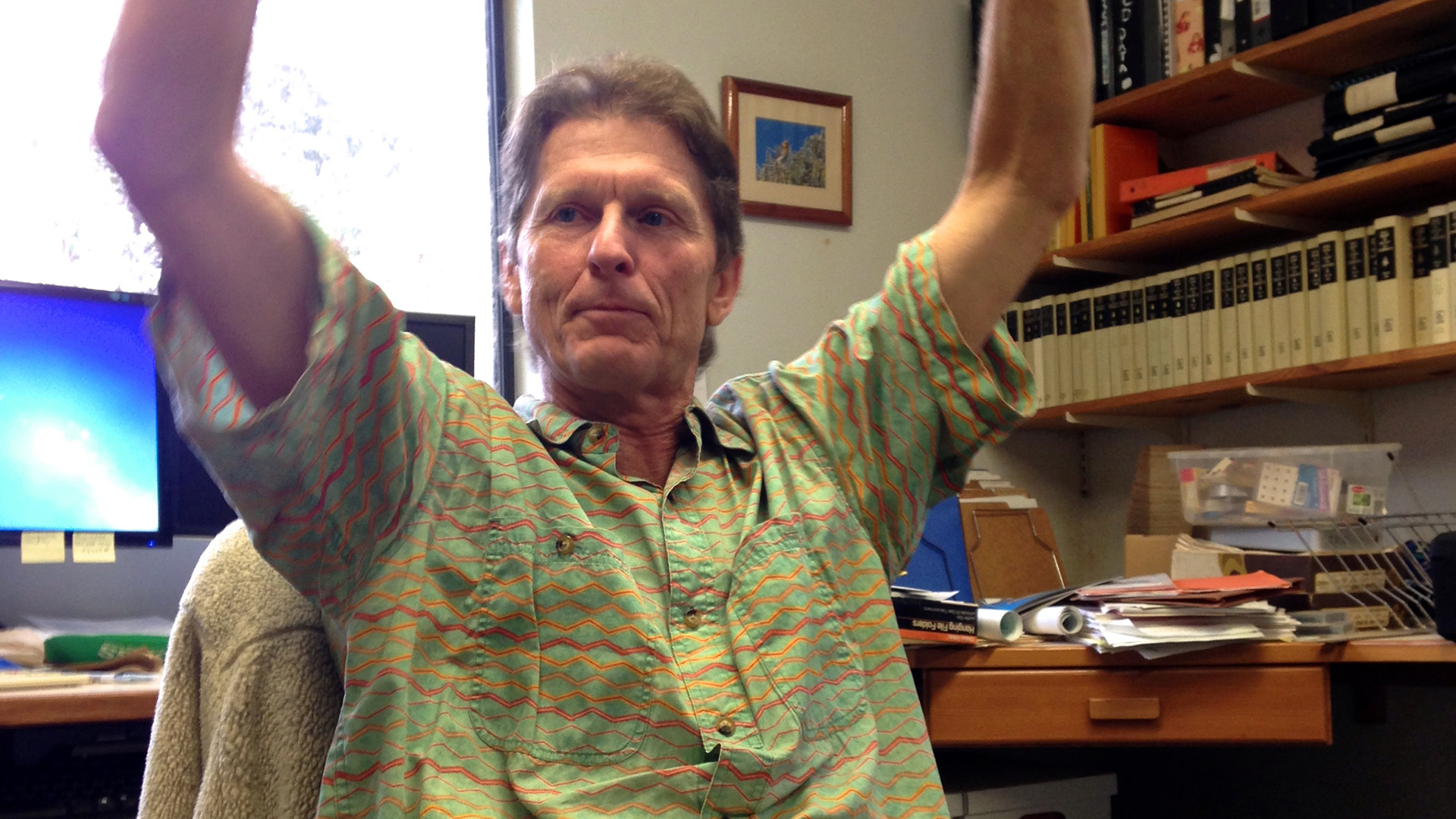
In 2002, the last pair of wild ‘alalā disappeared from the forest. Biologist Paul Banko is fighting to return this rare charismatic bird to the wild.
Paul Banko has an enviable commute: he rides his bike through cooled lava flows and dense fern forests to reach his office at Hawai‘i Volcanoes National Park. He’s been climbing trees, poking around in nests and rescuing imperilled birds here since his teenage years.

Back in the 1960s, his father was the first US Fish and Wildlife Service employee assigned to study Hawaii’s endemic avifauna; young Banko tagged along and later built a career out of bird-watching. Now, he’s a research biologist for the US Geological Survey, and an authority on Hawaiian forest birds. His expertise is crucial as biologists prepare to re-introduce the Hawaiian crow – one of the world’s rarest birds – back into the wild.
Hawaiian birds of all types suffered catastrophic decline in the 1800s. Habitat loss, mosquito-borne diseases and predation by introduced rats, cats and mongooses drove scores of native passerines over the cliff of extinction. The ‘alalā, or Hawaiian crow, was poised to follow suit. In 2002, the last pair of wild ‘alalā disappeared from the forest, and now, the species exists only in captivity. But thanks to an intensive breeding program managed by the San Diego Zoo, the ‘alalā is getting a second chance.

Banko is one of the few people alive today who has witnessed Hawaiian crows in their natural habitat. “Hearing the ‘alalā really shakes you,” he said. “At dawn, when it’s still dark, the territorial males start screaming at one another. It raises the hair on your back. During summer, the clouds move in and you’re encased in this quiet, cool mist. When the crows go off, it’s this tremendous contrast. If they’re distant and calling, it adds to the mystique.”

Their Hawaiian name, ‘alalā, means to bawl, yelp, caw or cry. Ancient Hawaiians practiced a style of chanting inspired by the bird: vibrating intonations loud enough to project over the din of battle. But ‘alalā aren’t only screamers. The birds’ diverse vocalizations range from soft mutterings and whistles to metallic growls that recall the twang of an electric bass guitar or a revving engine. Banko recorded hours of this mesmerizing avian chatter back in the 1990s, including behavioural notes with each call.

Tucked away in the primordial heart of the park, Banko’s office is surrounded by ambitious tree ferns and epiphytes that threaten to overtake the buildings. Not far away, the molten lake at Halemau‘u Crater spits out smoke and fire, allowing visitors a peek into the fiery origins of the planet. Banko’s desk and shelves are piled high with data collected from this fierce terrain: binders full of field notes, ornithological journals and delicately built birds’ nests. At 66 years of age, the inveterate birder is still able to climb trees and spy on hatchlings. When cradling the nest of an ‘elepaio, the native flycatcher, he marvels with childlike awe at its tight weave of lichens, twigs and poha berry husks.
Download Flash Player nowYou need to install Flash Player to play this content.
Despite the loss that he’s seen during his career, Banko remains optimistic and even inspired. “You can’t observe species going extinct and not have some way of grappling with it,” he said. Because of his efforts, and those of many others, the caretakers at the San Diego zoo are ready to release a few of their 114 captive ‘alalā into a preserve that neighbours Hawai‘i Volcanoes National Park, giving the Hawaiian crows the most promising chance they’ve had in decades.

The San Diego Zoo team is using Banko’s recorded alarm calls to train the captive birds to recognize threats they’ll encounter in the wild. The first six hatchlings will fly free in September 2016, outfitted with GPS tracking devices and carefully monitored. Periodic releases will continue for at least five years, to establish a strong flock with new social skills.
“They’re not going to be the same ‘alalā – anymore than we’re the same people who lived 100 or 200 thousand years ago,” Banko said. “This is a time of new development, new behaviours. But it’s the only way forward, so we hope for the best.”

If you liked this story, sign up for the weekly bbc.com features newsletter, called “If You Only Read 6 Things This Week”. A handpicked selection of stories from BBC Future, Earth, Culture, Capital, Travel and Autos, delivered to your inbox every Friday.
9 Replies to “The rare bird that screams and growls”